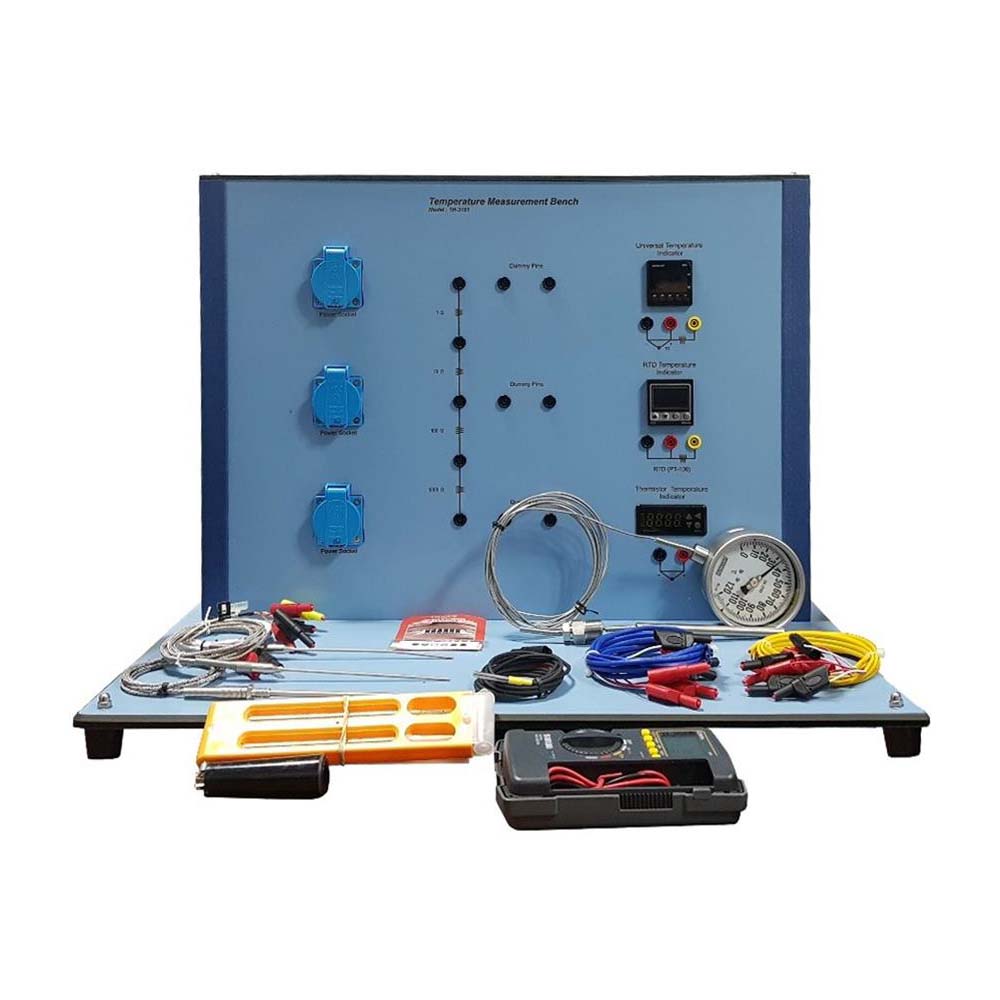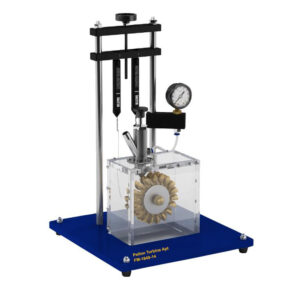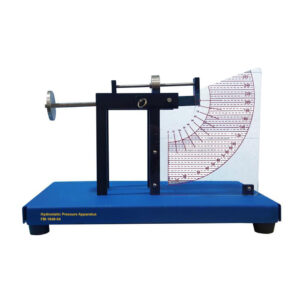Temperature Measurement Bench has been designed for students to study different types of temperature measurement methods. This is a complete, freestanding apparatus to demonstrate fundamental temperature measuring techniques using thermocouples, mercury in glass thermometers, resistance temperature detectors (RTD), thermistor, bimetallic temperature indicators and etc. Temperature measurement is used to measure air temperature, boiling water temperature, ice-point temperature, and wet or dry bulb temperature. Temperature can be measured via various ranges of sensors. All of these sensors infer temperature by sensing changes in physical characteristics. Thermocouples consist essentially of two wires made of different metals that are joined at one end. Resistance temperature detector devices capitalize on the fact that the electrical resistance of a metal changes as a result of temperature change. Thermistors are based on resistance change in a ceramic semiconductor where the resistance drops nonlinearly with temperature rise. Bimetallic devices take advantage of the difference in the rate of thermal expansion between different metals.
Experiments
- Measurement of water temperature in a hot water bath and vacuum flash using thermocouples, mercury in glass thermometer, RTD, bimetallic temperature indicator and etc.
- The peltier thermo-electric effect.
- The see beck thermo-electric effect.
- Reference junctions.
- The law of intermediate metals.
- The law of intermediate temperatures.
- Effect of lead resistance and meter impedance in thermocouple circuits.
- Connection of thermocouples in parallel.
- Connection of thermocouples in series.
- Comparison of accuracy and methods of calibration.
- Observation of dynamic response.
- Surface temperature measurement.
- Wet bulb and dry bulb temperature measurement.
- Determination of relative humidity.
Specifications:
- Experiments in the fundamentals of temperature measurement with different typical measuring devices
- Various heat sources or storage units: laboratory heater, immersion heater, vacuum flask
- Calibration units: precision resistors and digital multimeter
- Liquid, bimetallic, and gas pressure thermometers
- Temperature sensors: Pt100, thermocouple type K and J, thermistor (NTC)
- Various temperature measuring strips
- Psychrometer for humidity measurement




